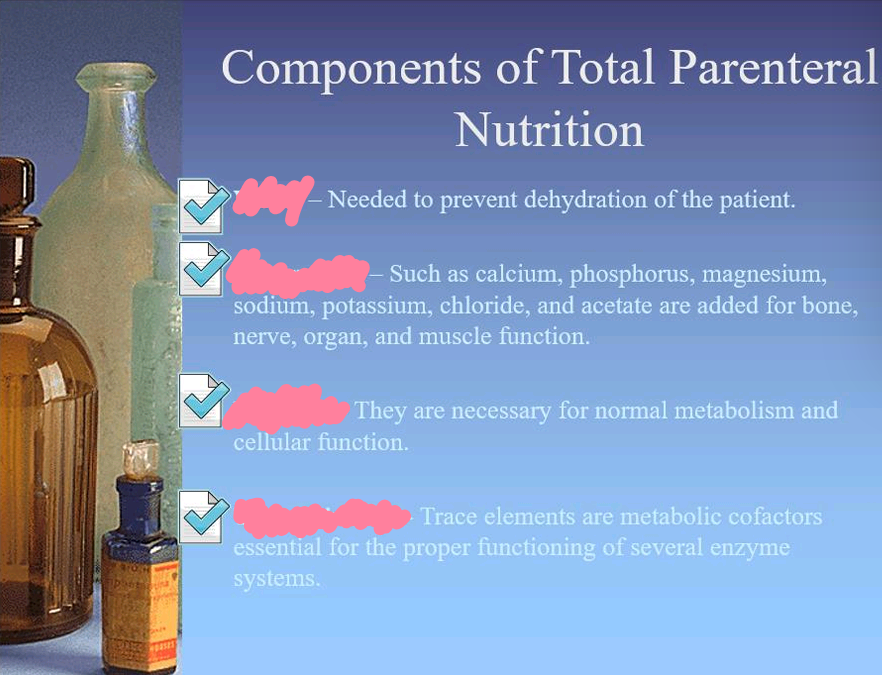Midterm Unit 2.1 (Compounding)
1/78
There's no tags or description
Looks like no tags are added yet.
Name | Mastery | Learn | Test | Matching | Spaced |
|---|
No study sessions yet.
79 Terms
Chapter 797
The United States Pharmacopeia (USP) has published chapter — entitled "Pharmaceutical Compounding— Sterile Preparations"
It emphasizes the role of the pharmacist in the compounding of safe parenteral admixtures.
Sterile water
NSS
Dextrose
Ringer’s
Lactated Ringer’s
Examples of commonly seen compounding chemicals
Sterile water
It is water free of organisms, used for medications that is aseptic uses
Isotonic
Hypotonic
Hypertonic
NSS normal saline:
0.9% chloride if —
0.45% if —
3% —
Dextrose
It has glucose, and now sugar if metabolized.
D means —, meaning it has sugar content.
Usually 5%, 10%, 50% and is in a red bag. It is considered as HAM (High alert medications), because they are used for patients that need higher level of glucose
Ringer's Solution
It contains electrolytes, such as SoPoCa (NaCl, kCl, CaCl)
Dr. Ridney Ringer
Ringer's solution was formulated by:
Lactated ringer's
It contains lactate which serves as a buffer and metabolized to NaHCO3, so it contains SoPoCaSo
Therapeutically and pharmaceutically appropriate for the patient
Free from microbial and pyrogen contaminants
Free from any level of particulate/toxic contaminants
Correctly prepared
Properly labeled, stored, and distributed
The department of pharmacy holds the responsibility to prepare PN admixtures that are:
True
True or false
Asetic technique, aside from BLS, is very essential in hospital practice
Encodes the order
Generated compounding sheet is checked by another pharmacist
Label printed is reviewed
Preparation of materials, medications, fluids
Compound
Once done, notify station
Check and dispense
Administration
The pharmacist’s roles and responsibilities in compounding
Anteroom
Clean room
Special areas in compounding (see picture)
1. — Room to change into appropriate clothes before going into clean room; practicing aseptic technique
2. — Where compounding happens, now aseptic
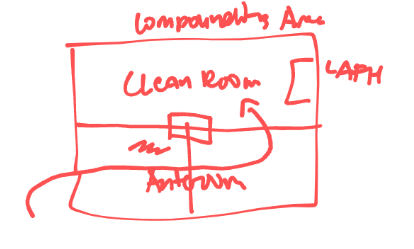
24 hours
In every compounded product, there is a difference in expiration date
TPN
Reconstituted (meaning components are added) is good for — hours
48 hours
In every compounded product, there is a difference in expiration date
TPN
Non reconstituted (meaning no components are added) is good for — hours
IV Fluids
functions as a means for fluid replacement, electrolyte balance restoration and supplementary nutrition, and as vehicles for administration of other drug substances and in TPN
Large volume parenterals (100-1000mL)
Small volume parenterals (25-50mL)
What are the two types of IV fluids and their amount
Colloid solutions
Crystalloid solutions
What are two types of solutions
Colloid solutions
contain large proteins or similarly sized molecules (macromolecules)
increase intravascular volume (plasma expander)
short term use, may dehydrate cell
Plasma protein factor (for bleeding patient)
Albumin
Dextran
Hetastarch
Examples of colloid solutions
Crystalloid solution
contain electrolytes
mainstay IV therapy
PNSS Plain normal saline solution
isotonic
0.9% NaCl about 300mOsm/L
to replace water & sodium
D5W Dextrose 5% in distilled water for injection
isotonic about 300mOsm/L
becomes hypotonic upon infusion due to the metabolism of glucose
caloric agent
D5NSS Dextrose 5% in Normal Saline Solution
hypertonic ; about 600mOsm/L
becomes isotonic upon infusion, due to the metabolism of dextrose
not very damaging to the cells
caloric agent
True
True or false
NSS, D52, and LR are all isotonic solutions
D2 500 45 NSS
Isotonic to hypotonic
Caloric agent
PRS Plain Ringers Solution
hypotonic
Na, K, Ca, Cl
used to keep veins open for infusion
Plain Lactated Ringers Solution
Ringer’s Solution + Na Lactate
approximates extracellular fluid
alkalinizing effect
Lactate to Bicarbonate
Commonly used for birthing moms, seen in birthing clinics to replenish electrolytes
Isotonic solutions
These solutions are used for patients with volume deficit (hypovolemia). Hypervolemia may occur with too much administration
NSS
D5W
D5NSS
D250045NSS
PRS
PLRS
What are the crystalloid solutions
intravenous (IV) fluids
When patients experience deficient fluid volume, these are often prescribed. They restore fluid to the intravascular compartment, and some are also used to facilitate the movement of fluid between compartments due to osmosis.
Isotonic
Hypertonic
Hypotonic
Three types of intravenous (IV) fluids
Isotonic solutions
These are IV fluids that have a similar concentration of dissolved particles as blood.
Because the concentration of the IV fluid is similar to the blood, the fluid stays in the intravascular space and osmosis does not cause fluid movement between compartments
Hypotonic solutions
They have a lower concentration of dissolved solutes than blood.
They are used to treat cellular dehydration
Hypertonic solutions
They have a higher concentration of dissolved particles than blood.
When infused, these fluids cause an increased concentration of dissolved solutes in the intravascular space compared to the cells
hypervolemia
When administering hypertonic fluids, it is essential to monitor for signs of — such as breathing difficulties and elevated blood pressure.
IV Admixture
when one or more sterile products are added to an IV fluid for administration
it is prepared with aseptic technique or environment provided by laminar flowhood, in which the air is filtered through HEPA filter
True
True or false
HEPA filters can be horizontal or vertical type
True
True or false
In a laminar air flow hood, the air pressures can be horizontal or vertical (compounding). Positive and negative air pressure is for hospital in general
HOTO (horizontal air towards you)
Acronyms of Horizontal and Vertical LFH
Horizontal air flow
For laminar flow hood
air is going towards you
for nontoxic or non chemotherapeutic drugs
Vertical airflow
For laminar flow hood
air is going away from you
for dangerous and toxic drugs
Positive airflow
for those patients that are immunocompromised to protect them from outside contaminants
air should flow outside the room because of higher pressure inside room
PONI (Positive air flows outside, negative air flows inside)
Acronyms for positive and negative airflow
Negative airflow
air flows in the room to contain the air inside
air should flow inside because the pressure is lower
Total Parenteral Nutrition
IV administration of calories, nitrogen, and other nutrients in sufficient quantities to achieve tissue synthesis and anabolism
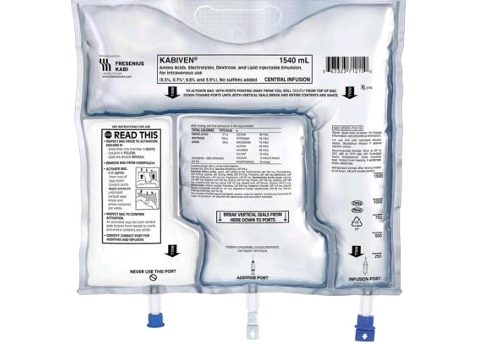
Total Parenteral Nutrition
is the practice of feeding a person intravenously , bypassing the usual process of eating and digestion . The person receives nutritional formulas containing salts glucose , amino acids lipids , , and added vitamins .
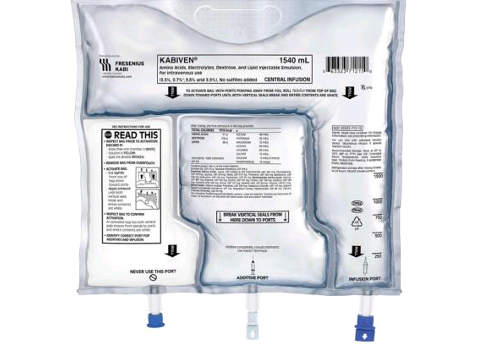
Total Parenteral Nutrition
also referred to as Parenteral nutrition (PN)
provided when the gastrointestinal tract is nonfunctional or absorptive capacity is impaired
used for comatose patients
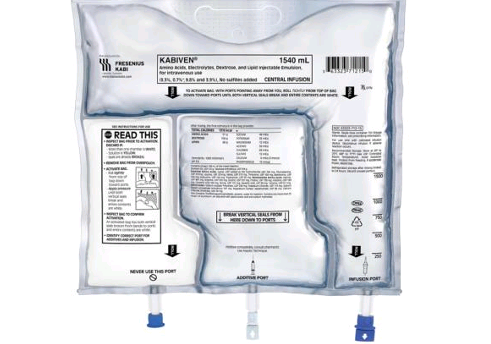
Short term TPN
Long term TPN
Two types of also referred to as Parenteral nutrition (PN) ➢provided when the gastrointestinal tract is nonfunctional or absorptive capacity is impaired ➢used for comatose patients
Short term TPN
This TPN may be used if a person's digestive system has shut down (for instance by Peritonitis )
Peritonitis
Usually in surgeries, it is brought by bacterial infections during these procedures.
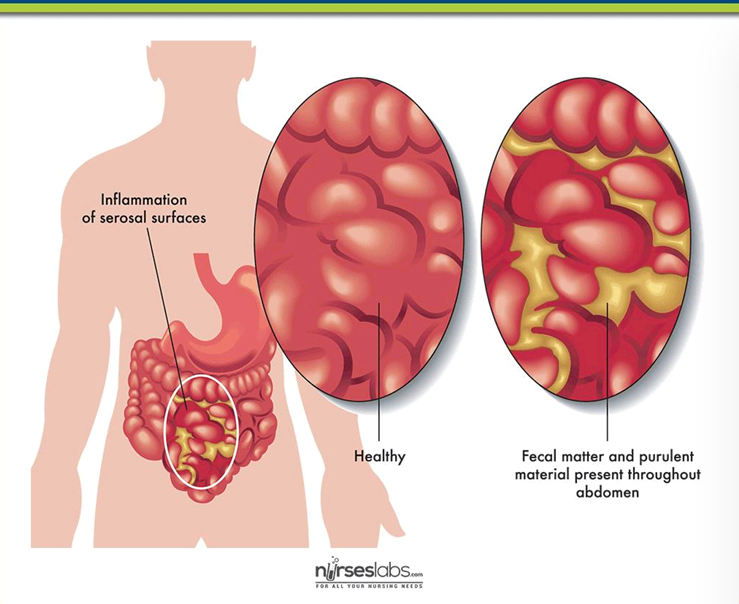
Peritonitis
inflammation membrane cavity of the peritoneum (the which lines part of the serous abdominal and some of the viscera it contains).
often due to rupture of a hollow viscus (internal organ of the thorax or abdomen )
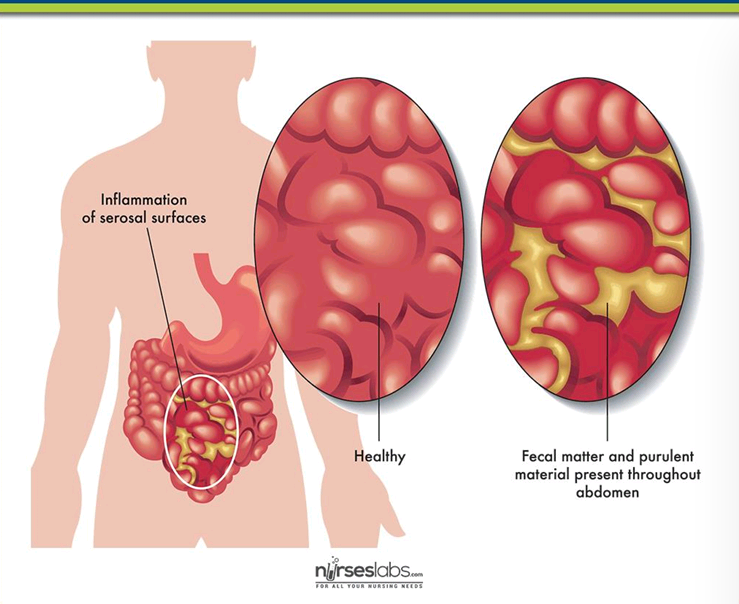
Long-term TPN
This TPN is occasionally used to treat people suffering the extended consequences of an accident or surgery.
infusion pump
The preferred method of delivering TPN is with a medical — .
A sterile bag of nutrient solution, between 500 mL and 4 L is provided. The pump infuses a small amount (0.1 to 10 mL/hr) continuously in order to keep the vein open.
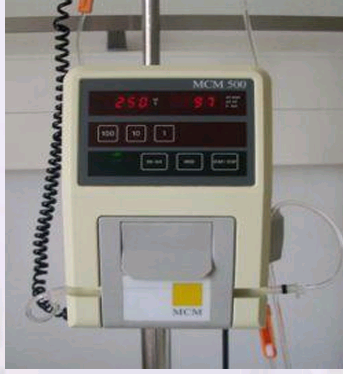
infusion pump
infuses fluids, medication or nutrients into a patient’s circulatory system
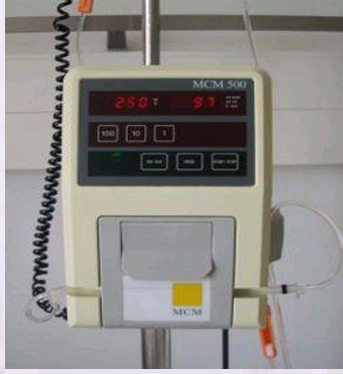
Recall
Recall indications for PN
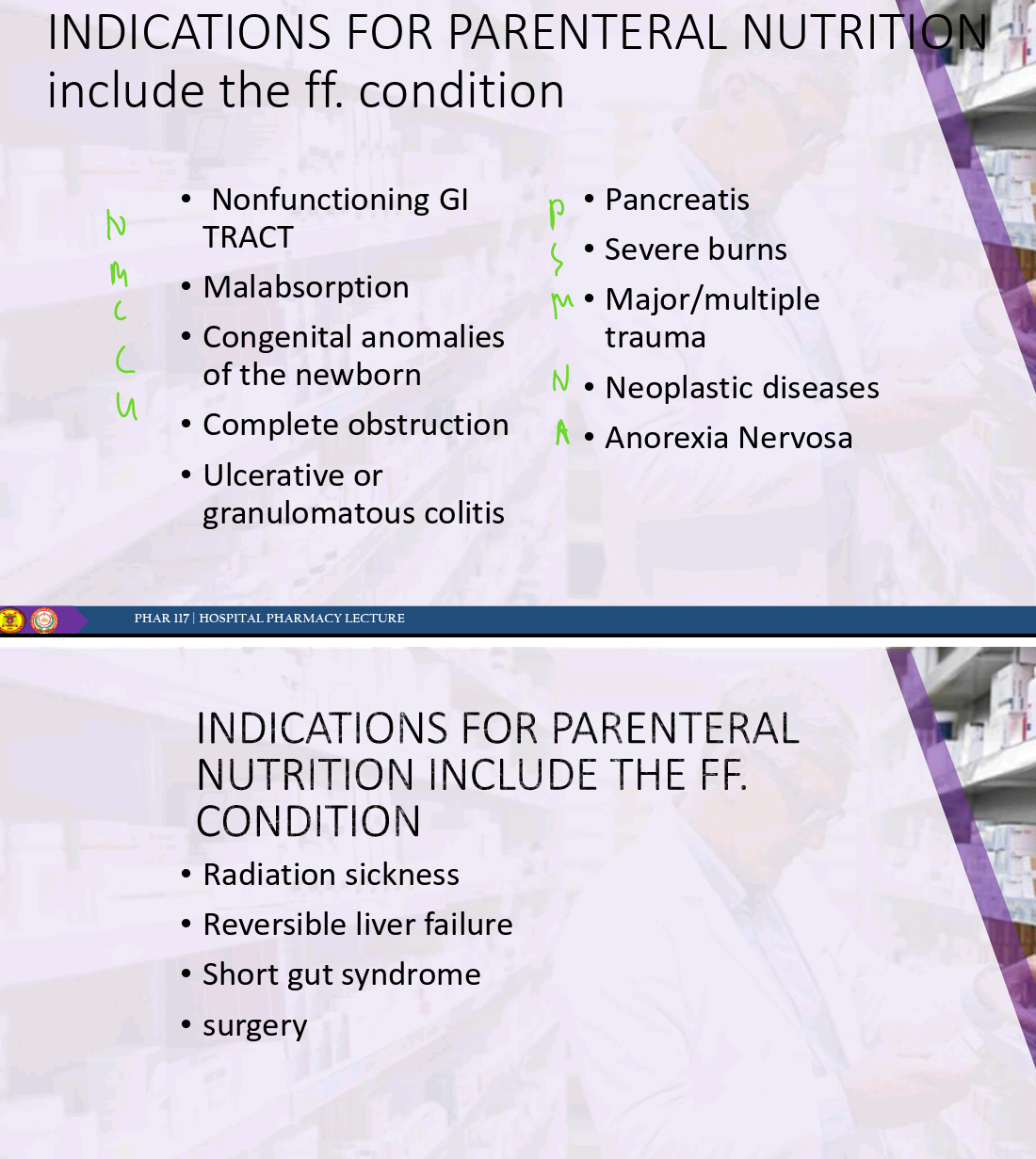
Parenteral nutrition
The primary goal of — is to provide patients with adequate calories and protein to prevent malnutrition and its associated complications
bacterial infection
The most common complication of TPN is —
usually due to the increased infection risk from having an indwelling venous catheter
Fungal infections can also occur
Liver failure
This condition is due to the difficulty in processing food taken in directly into the bloodstream.
Often related to fatty
Bacterial infection
Liver failure
Venous thrombosis
Priapism
Metabolic acidosis
What are the complications of TPN
Venous thrombosis
Is a blood clot that forms within the vein
Embolism
Thromboembolism
Since the veins return blood to the heart , if a piece of a blood clot formed in a vein breaks off it can be transported to the right side of the heart, and from there into the lungs .
A piece of thrombus that is transported in this way is an —
the process of forming a thrombus that becomes embolic is called a —
Pulmonary embolism PE
An embolism that lodges in the lungs is a —
True
True or false
If a needle from the TPN is taken out, a clot can from
Priapism
It is a potentially harmful medical condition in which the erect return to its flaccid state
Rare complication
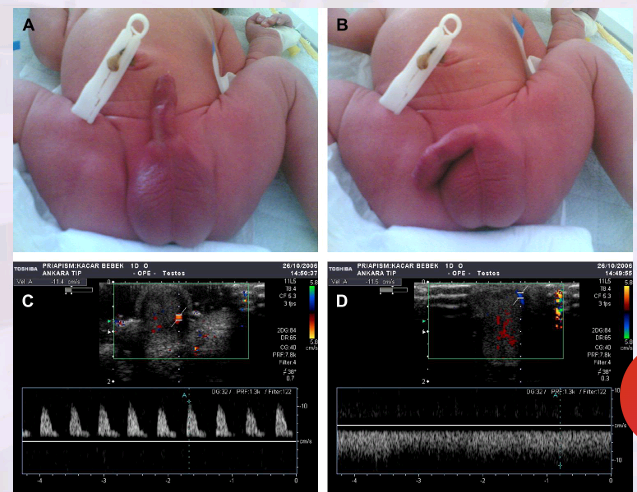
Priapus
Priapism
The name comes from the Greek god “— ”, referring to the myth that he was ironically punished by the other gods for attempting to rape a goddess, by being given a huge (but useless) set of wooden genitals.
HCO3
PaCO2
If metabolic, meanig anything about —
If respiratory, meaning anything about —
Metabolic acidosis
Other complications of TPN are related to the difficulties the body has processing TPN. One complication is non-anion gap —

Hyperventilation
What is the clinical manifestation of metabolic acidosis
Enteral
It means direct delivery of nutrients to the GI tract
Nasogastric, nasoduodenal, nasojejunal, gastrostomy, jejunostomy
PPN, TPN
What are the examples of enteral and parenteral
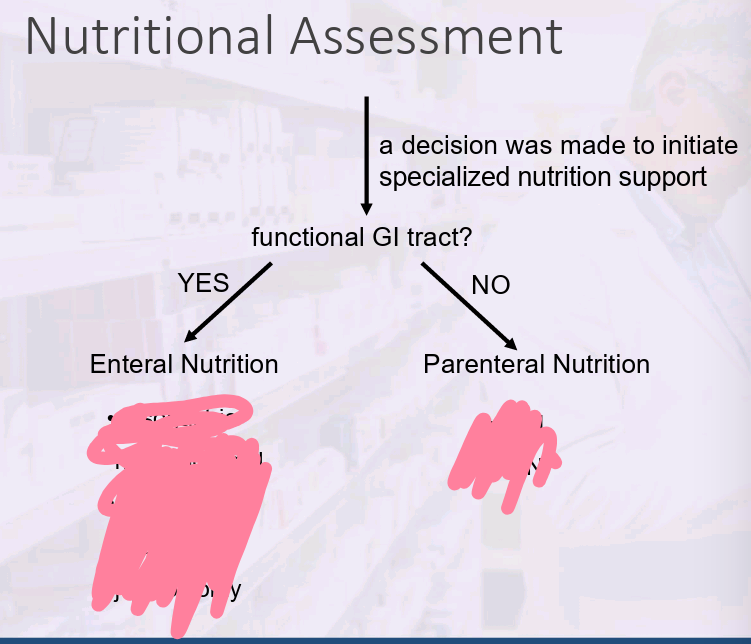
False
True or false
PPN is used for long term TPN
Read
Answer read
NGT patients usually has a functional GI Tract, but stroke patients cannot chew for themselves. Doctors would usually detect signs of stroke and then determine if NGT should be conducted when the patient has signs of aspiration (cough) when taking small amounts of water
Nasogastric (NG Tube)
Nasojejunal (NJ tube)
Percutaneous endoscopic gastrostomy (PEG TUbe)
Jejunostomy tube (J TUbe)
What are the types of feeding tubes
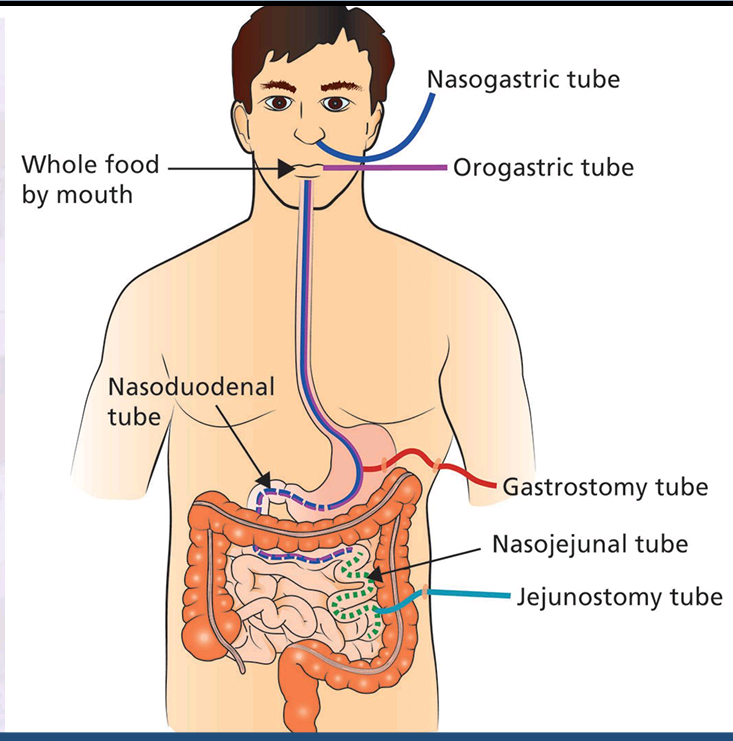
NG Tube

NJ Tube

Percutaneous endoscopic gastrostomy (PEG Tube)

Jejunostomy J Tube

Protein (amino acids)
Carbohydrates (dextrose)
Fats (lipid emulsions)
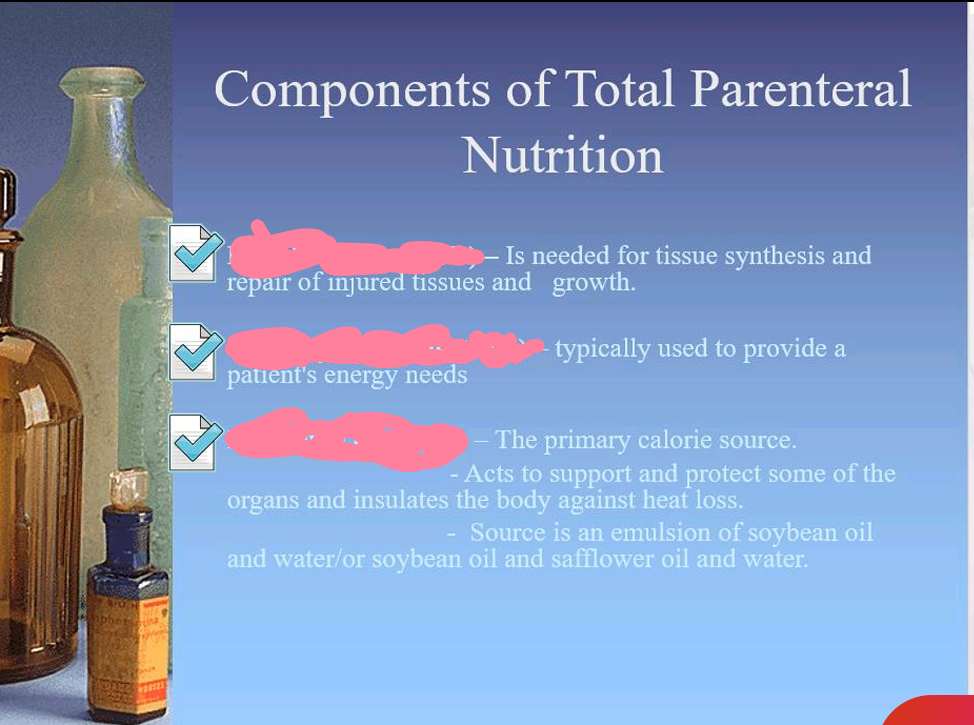
Water
relectroyltes
Vitamins
Trace minerals
